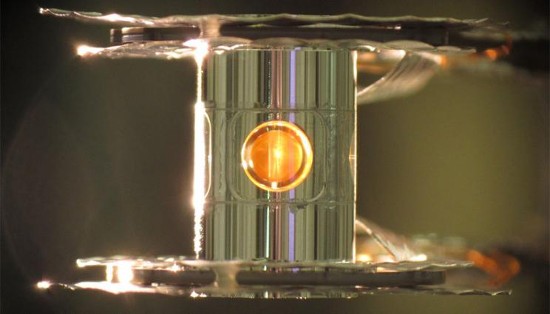We need a Manhattan Project Plus to make fusion reactors part of the desired zero-emission outcome by mid-century. Why this is not a bigger deal than it is today is beyond me. Is it because the whole nuclear power industry is tainted by past accidents and spent fuel rods? Or is it because the general public doesn’t understand the differences between fusion and fission energy? Because nuclear fusion is not nuclear fission. And although the investment needed is significant, the payoff for our planet will be enormous. Fusion reactors would produce zero emissions. With sourcing low-carbon materials and using low-emission supply chains, even construction could produce limited contributions to atmospheric warming.
So that’s why I was heartened a bit by the announcement from the Lawrence Livermore National Laboratory in California where a test was conducted that produced significant amounts of energy in a nuclear fusion experiment. The target was a minuscule BB-sized container of hydrogen atoms, referred to as a hohlraum capsule shell and fill tube, within a 10-metre diameter vacuum chamber. Precision-targeted lasers were fired at it causing a pre-ignition fusion response that released 1.3 megajoules (MJ) of energy. The energy input to create the reaction still was greater than the energy released, but for the first time, at 70%, it was described as being on the threshold of fusion ignition.
Now 1.3 MJ is not a lot of energy. As a frame of reference, it translates to about 0.36-kilowatt-hours which is enough energy to run a 100-watt lightbulb for about 3.6 hours. Mind you the amount of fuel was small, but as energy requirements go, it was still far from the aha moment for fusion energy as a viable technology for commercial implementation.
The Lawrence Livermore team described their results as an eight-fold improvement over a previous experiment conducted in the spring and a 25-fold increase over those conducted in 2018. Plans to repeat the experiment to see if the results can be duplicated are moving ahead.
In an article about the Lawrence Livermore experiment that appeared in The Guardian, Jeremy Chittenden, Co-Director of the Centre for Inertial Fusion Studies at Imperial College London, noted that the results represent a more than 1,000-fold improvement from yields in 2011. He went on to say “we may soon reach more energy milestones, such as exceeding the energy input from the lasers used to kickstart the process.”
Fusion energy reactors take small atoms like hydrogen and fuse them together to produce heavier ones like helium. The form factor for these facilities need not be the monsters we see for fission reactors with their enormous concrete containment structures. A fusion reactor can be housed in an average-sized building. And the fuel to run it is readily available. But other than the net positive yield challenge, the construction of such a facility and the materials used still needs to be addressed. Unless a fusion reactor produces 30-times greater energy yield than input, and its containment structure demonstrates the ability to withstand continuous nuclear bombardments over a facility lifecycle of 30 years or more, commercialization of the technology remains problematic.
There is no doubt that Lawrence Livermore is on track to soon achieve a net positive energy output over input. It is in a race to beat the competition which is coming from government and private industry in other facilities in the U.S., the European Union, United Kingdom, Russia, Canada, Japan, South Korea, and China.
Solving the construction material issue will need to overcome some pretty prohibitive costs. Current material candidates for fusion reactors include beryllium and tungsten. A gram of beryllium costs $27 US. There are a million grams in a metric ton so you can figure out just how steep the cost will be using this material. On the other hand, tungsten at $270 US a metric ton seems relatively cheap, although it is not. And the longevity issue remains unknown until we have a fusion reactor operating continuously for a period of time.
When the United States created the Manhattan Project to develop the atomic bomb, the total investment in dollars at the time was $2 billion which equals approximately $23 billion in current dollars. That is an interesting number when you start looking at investments to date in fusion reactor technology. ITER in France when complete will probably cost $20 billion. Lawrence Livermore’s fusion research is costing $4 billion. The UK and China are each putting in about a billion on separate projects. Add in private enterprise and venture capital firms with the total numbers well exceeding a billion and you have an amount even greater than what it took to build the first nuclear weapon.
Under the imminent threat of anthropogenic climate change, fusion energy could provide a means to mitigate global warming by accelerating the switch away from carbon energy sources. Fusion could have many advantages over renewable energy sources including smaller facility footprints, smaller carbon footprints during construction, and less material and waste. (What do you do with old wind turbine blades?)
The $23 billion price paid for the Manhattan Project won’t get us there, but a Manhattan Project Plus equalling ten times that amount or more spent now could advance the technology far more rapidly. And when you consider the end results, energy self-sufficiency for the entire planet with net-zero emissions, that is not a big ask. And when you consider the massive investments made by nations all around the world in the last two years to combat the COVID-19 pandemic, we know the big ask is possible. Global warming is an existential threat. Whereas we may learn to live with low levels of COVID-19 infections persisting, rising atmospheric temperatures may make much of the planet uninhabitable.









